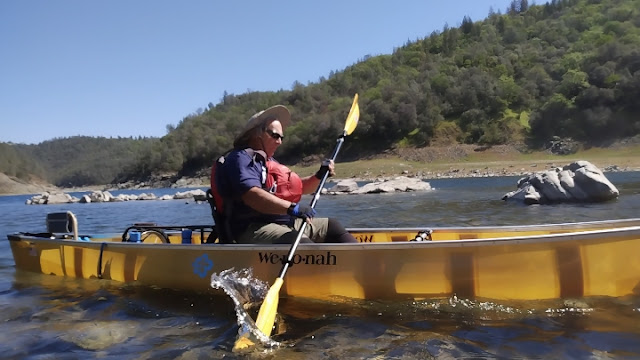As springtime comes, many paddlers are contemplating their plans for summer adventures. Extreme adventure kayaker Rick "Rhino" Ryan is gearing up for a never been done before odyssey paddling every river on earth. It will be a 50-million-mile journey that will take him to unexplored wildernesses in the far reaches of the world.
"I'm always looking for new epic challenges," said Rhino, "I thought I'd start with all the rivers of America. But then I thought maybe not big enough, maybe North America, and from there it just cascaded into all the rivers of the world. So, I'm going colossal!"
According to Alexa, there are about 165 major rivers in the world. Rivers vary in size and distance. There are 76 rivers in the world over 1000 miles long. Located in the continent of Africa, the Nile River is the longest at 4,135 miles. The Amazon River in South America is 3,980 miles long, while the Mississippi River and the Missouri Rivers is the longest river system in North America at 3,902 miles, just to name a few. There are thousands of smaller rivers, but the exact number is difficult to determine. Hydrologists studying images from a NASA Landsat satellite estimate the United States alone has around 3.5 million miles of river miles. While the earth calculates some 58 million river miles on the planet.
"It's definingly going to be a lot of paddle strokes, "said Rhino.
Rhino is a world-class paddler who's always looking for his next challenge. He's tackled some of the planet's most dangerous waterways for nearly a decade, always looking for that next thrill that most would consider a death wish. He has traveled all the big rivers of the world like the Colorado, Amazon, the rivers of Nepal. But it was down a jungle river in California that made him a legend in the paddling world.
In 2021, brought on during the Covid-19 shutdown, he jumped the fence at Disneyland to paddle Adventureland's Jungle Cruise Waterway, what some called the globe’s most treacherous river.
"I remembered the river ride as a kid," said Rhino, "That was the first trip river trip that got me hooked on paddling. It was crazy! Lions, hippos, tigers, and danger everywhere! I was lucky to survive."
Officials weren't too happy, however. That voyage trip did get him arrested, and he now has a lifetime ban in the park.
"He been thinking of doing this for quite a while," said Dan Masters of Master of Disasters Kayaking & Trips, "A lot of paddling expeditions compare their trip to that of like that of going to the moon. This one is like going to every star in the heavens. But he'll do it. I'm sure he will get it done in half the time most people would think. It would take two or three lifetimes for a lot of paddlers."
While the big-name rivers like the Colorado, Nile, Amazon, and Indus River are all well known. It's the not-so-famous ones that Rhino is looking forward to running the most.
"I plan to be shooting the big whitewater waves, the easy flat water, and every in-between. There will be a lot of first descents down forgotten rivers. There will be some spectacular drops and challenging water along with some incredible views of both remote as well as urban landscapes."
And you will be able to come along. Rhino's odyssey will be shown on Extreme Sports Adventure productions. ESA is the company that produces, The Real Wives of Kayakers. It's a highly rated TV show featuring women partnered with paddlers living the life, that believe it or not, does not always go steady with the flow. That show focuses on women living their dream of setting camera shots, making room for another boat in the garage, lonely shuttle drives, and dealing with smelly wet neoprene.
"I'm excited about having them along." said Rhino, "It will be part travel show, part food, and a lot of action. It will be a really great show or at least a swell beer commercial."
Rhino, who seems to have been prepping for this voyage for years, says he will use 57 different types of boats for his epic expedition.
"I got them all stashed in the garage," said Rhino, "I'll use pack rafts for those small hard-to-navigate rivers. My creek boats for the wild rivers. My sea-going kayaks for long stretches of water. And my canoe for places like the Mississippi. I'll even have a horse tank in Nebraska and a bathtub for Florida."
Rhino's wife Debbie, who will be along for a good part of the trip, said, "I'll miss him when I can't be with him, but it will be great to finally park the car in the garage."
Rhino expects the epic expedition to begin on April 1st.
Keep up with Outside Adventure to the Max, on our Facebook page and Instagram, and now on Youtube.















.jpg)






